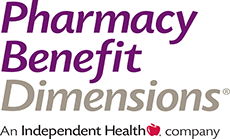On February 16, 2024, the U.S. Food and Drug Administration (FDA) approved Xolair® (omalizumab) to reduce the risk of anaphylaxis, a life-threatening allergic reaction due to accidental exposure to offending foods in adults and children 1 year and older with food allergies. The Centers for Disease Control and Prevention (CDC) has determined that nearly 6% of people in the United States have a severe food allergy, a condition for which there is currently no cure. Xolair® is not intended for the immediate emergent treatment of an allergic reaction, which is typically managed with rapidly acting epinephrine products like Epi-Pen. Instead, it should be used regularly to reduce the risk of a severe allergic reaction in case of accidental exposure to a triggering food allergen. Patients using Xolair® for this indication are still advised to avoid these foods. Xolair® works by binding to and blocking the immunoglobulin E (IgE) antibodies responsible for triggering the allergic reaction. It was initially approved by the FDA in 2003 for managing severe, persistent asthma related to airborne allergens. More recently, Xolair® was studied in patients who were allergic to peanuts as well as at least two other foods including eggs, milk, cashews, hazelnuts, walnuts or wheat. When given a single serving of peanut protein, 68% of patients treated with Xolair® did not have moderate to severe allergic symptoms such as vomiting, whole body hives or persistent coughing. Strict allergen avoidance is still necessary as 17% of treated patients did not have a significant change in their allergic reaction to peanut protein. Similar results were seen with other food allergens. 67% of patients who also had an egg allergy, 42% with a cashew allergy and 66% with a milk allergy were able to consume one serving of these products without moderate to severe allergic symptoms. The most common side effects of Xolair® were fever and injection site reactions. It also has a warning for anaphylaxis, as this has been reported in patients both when receiving the first dose and up to a year into treatment. As a result, Xolair® must be administered in a healthcare setting initially before being able to consider self-administration.






